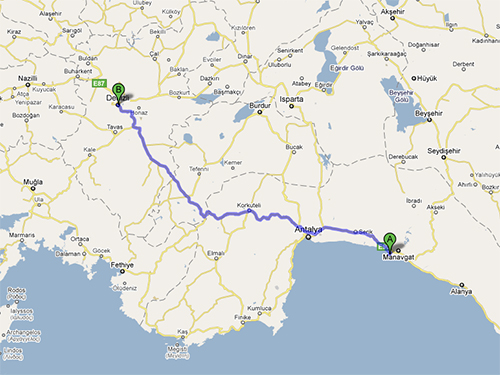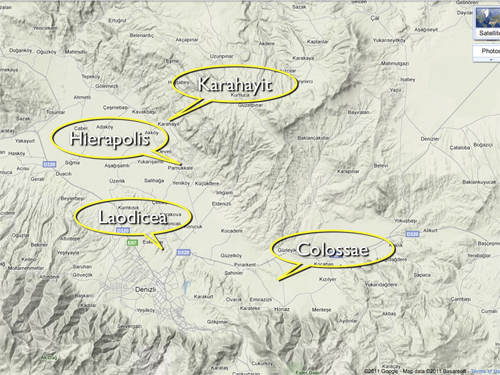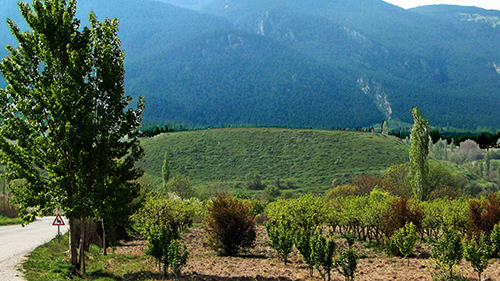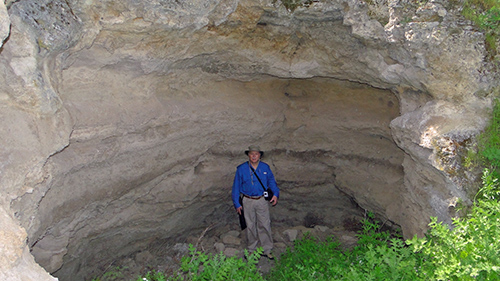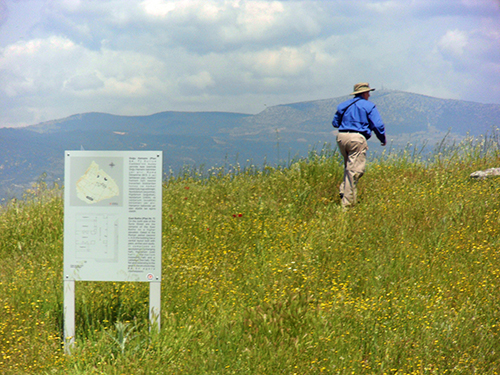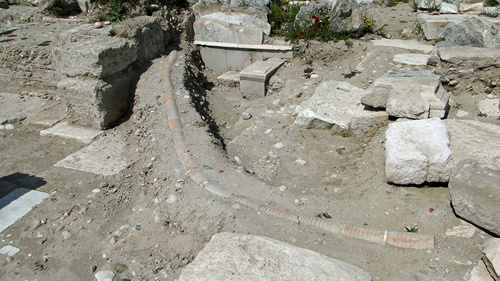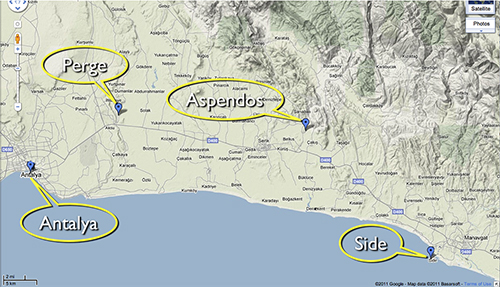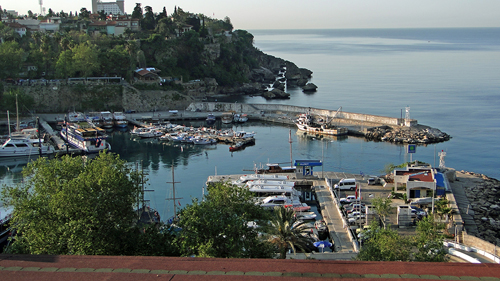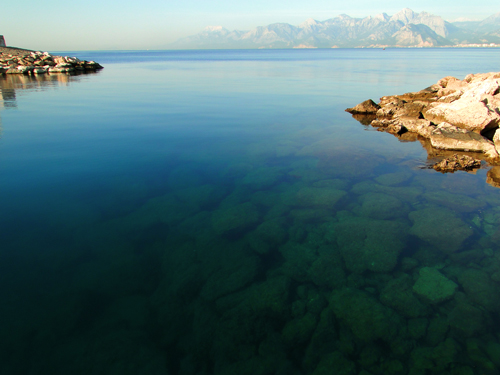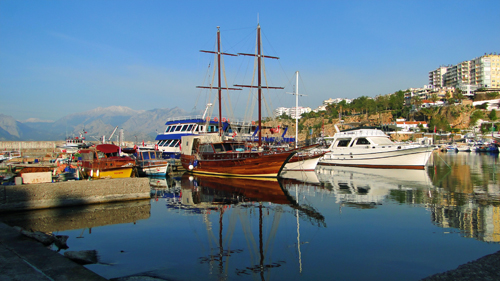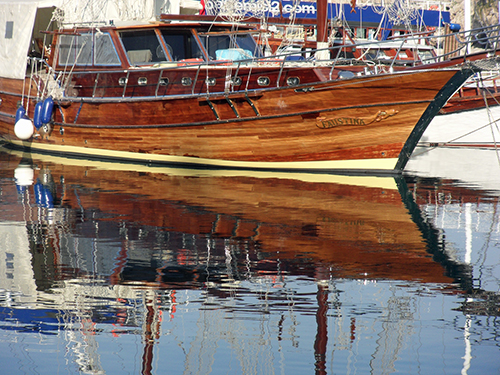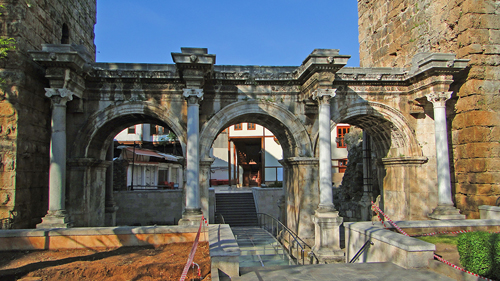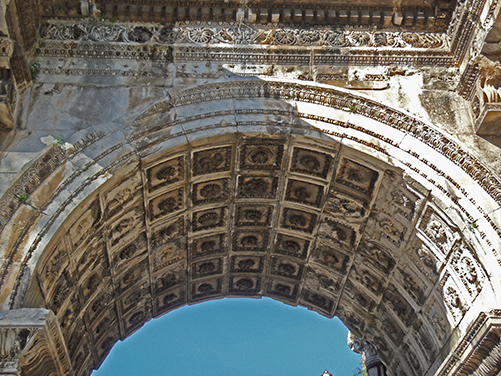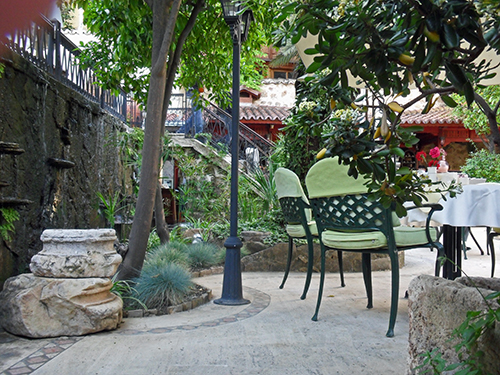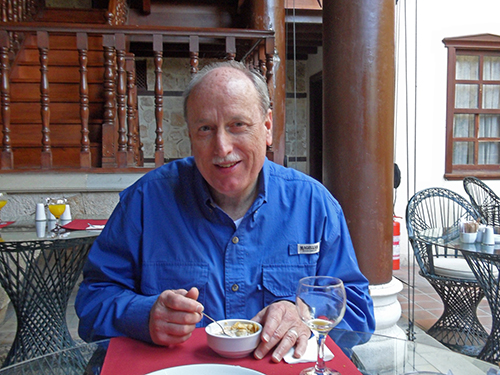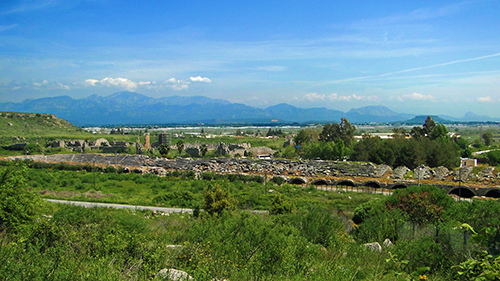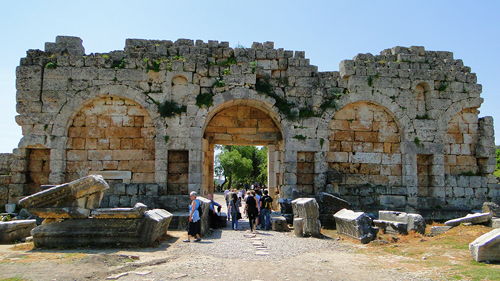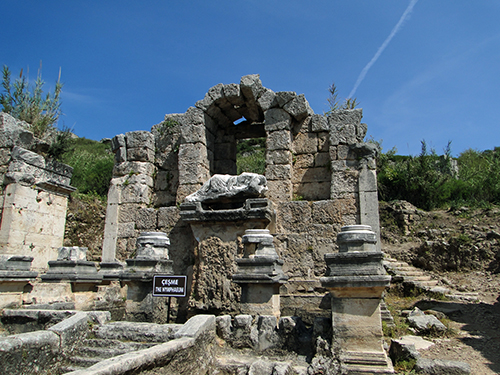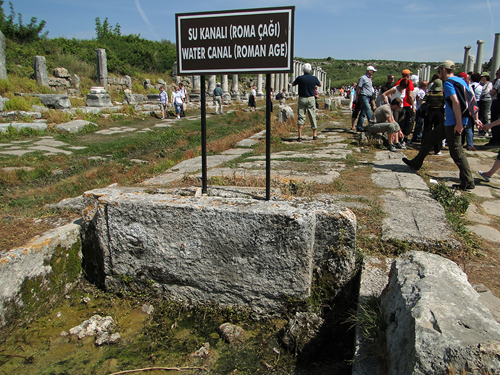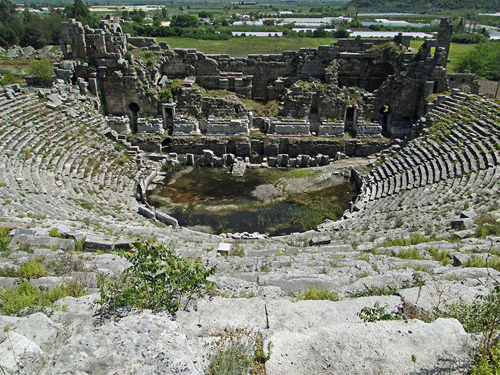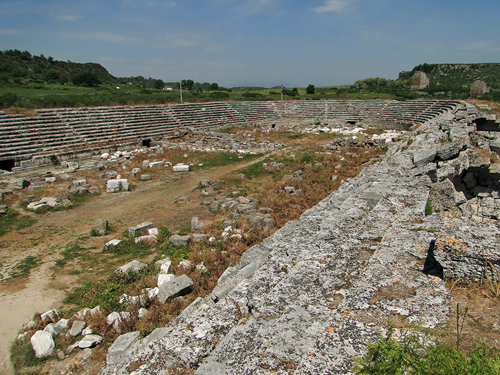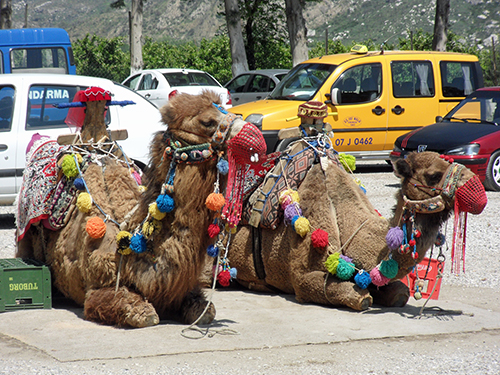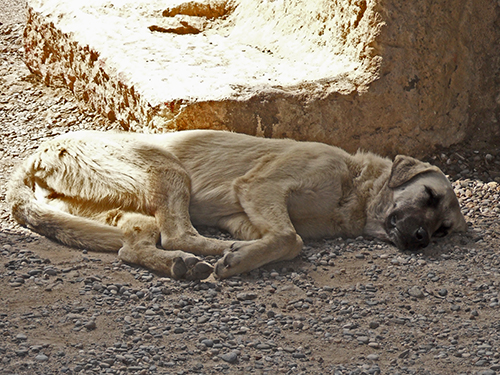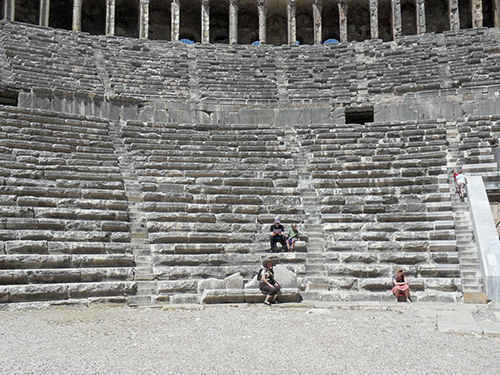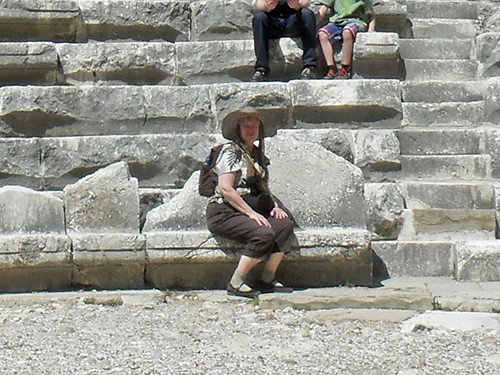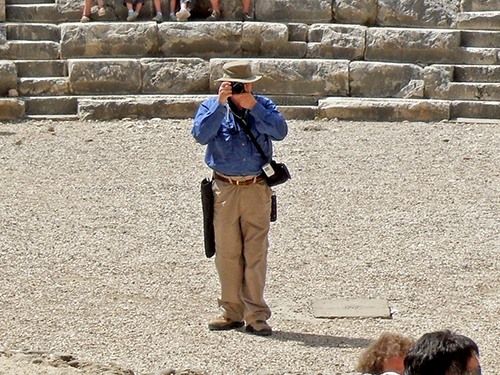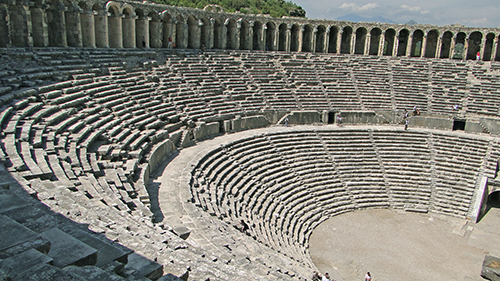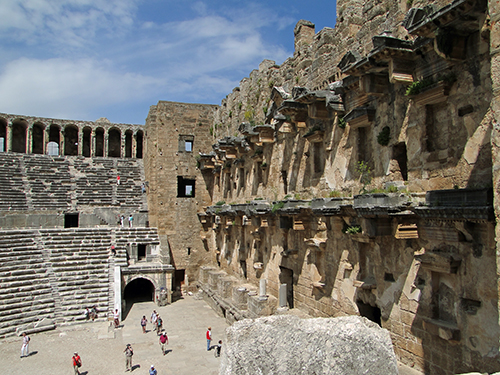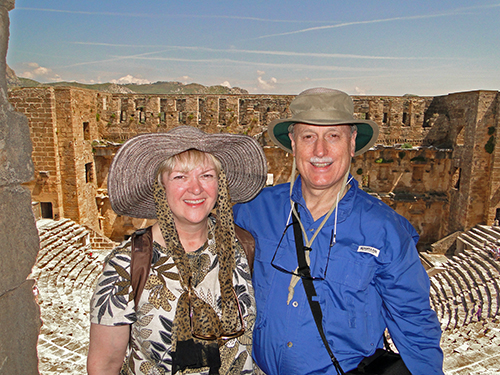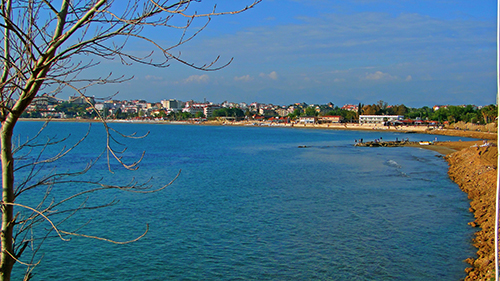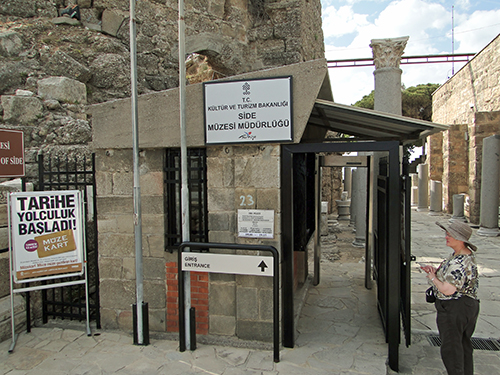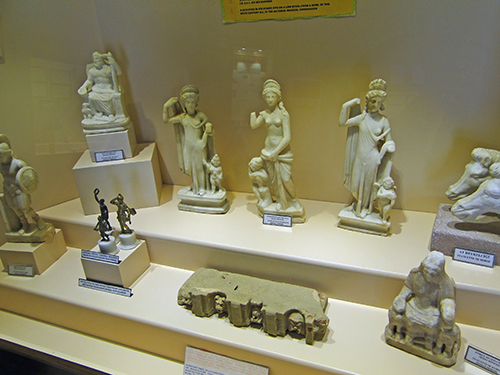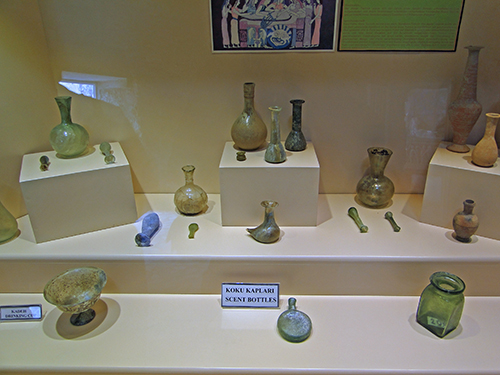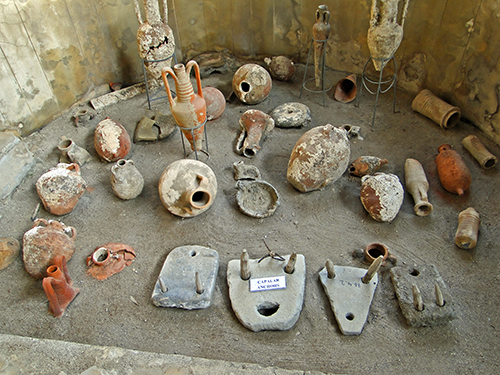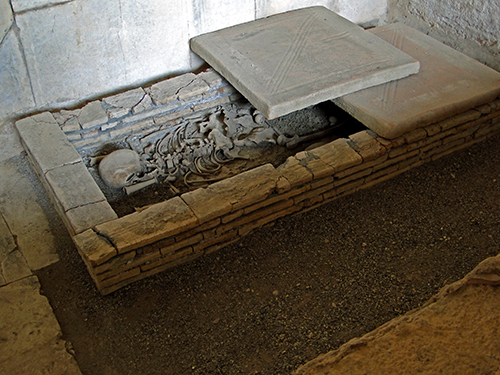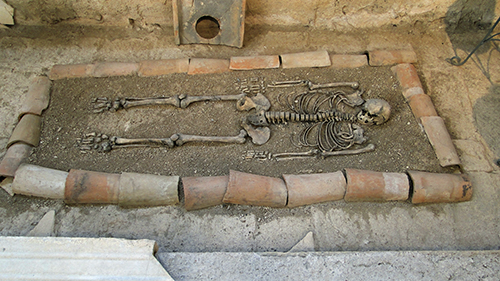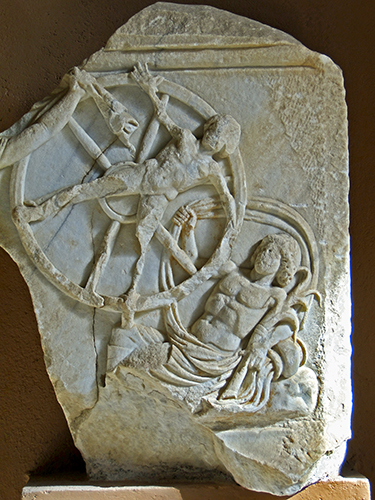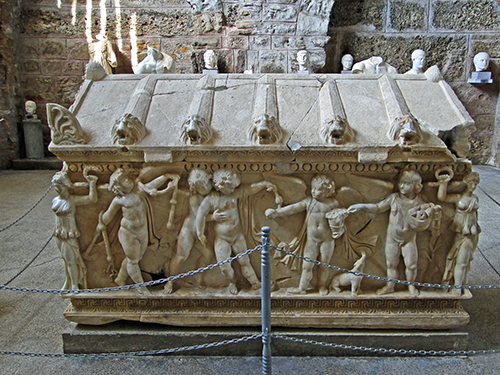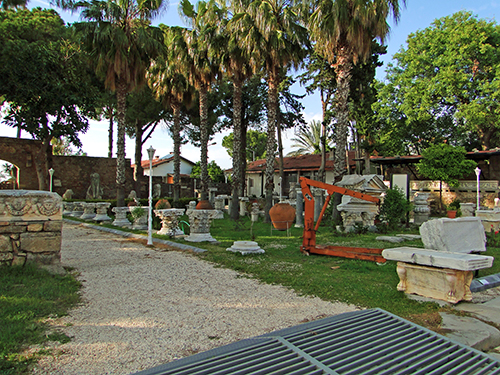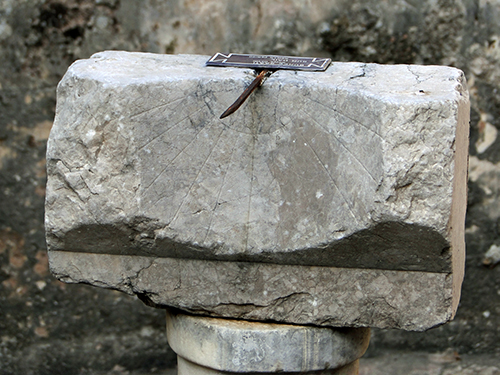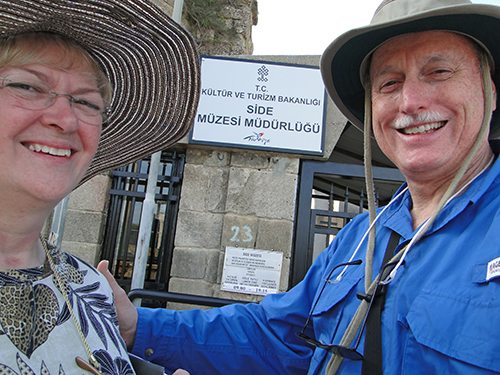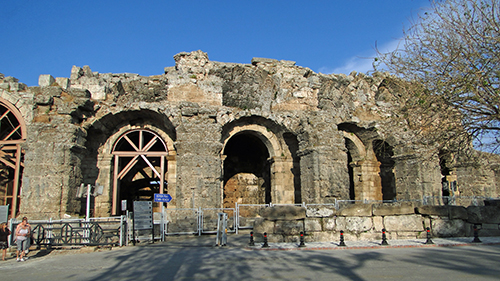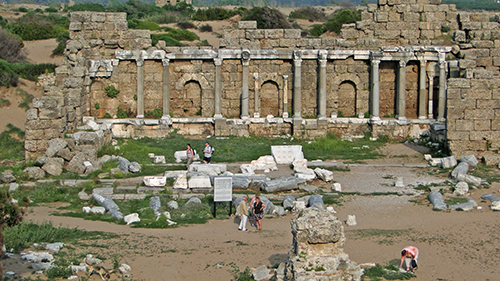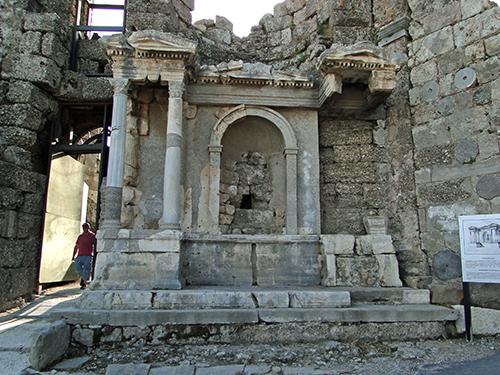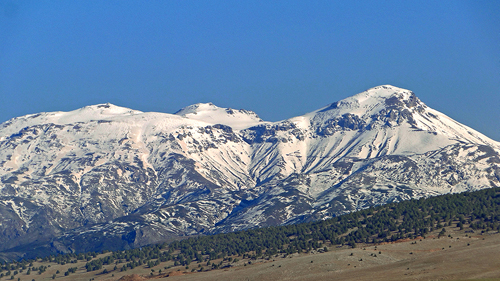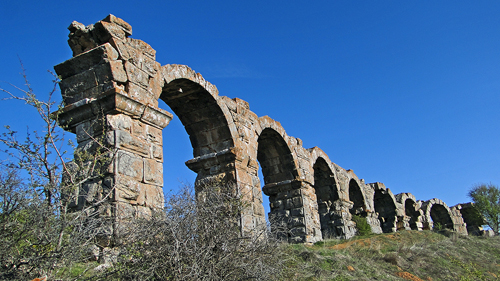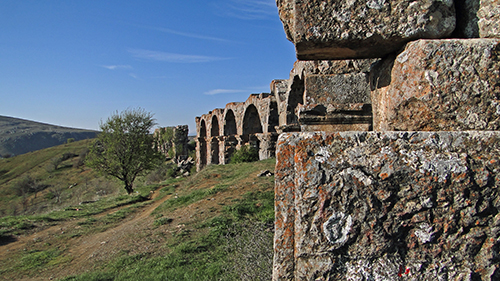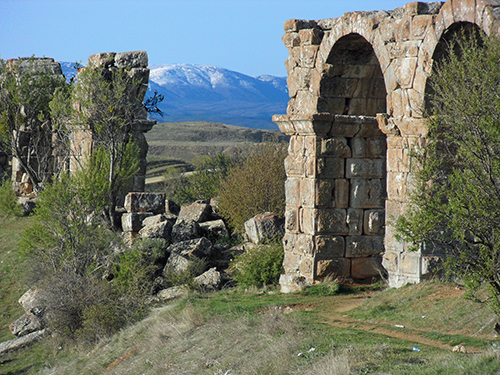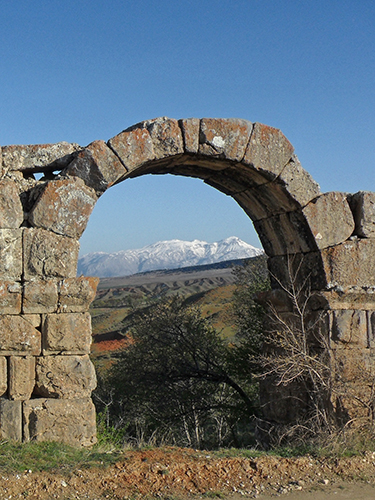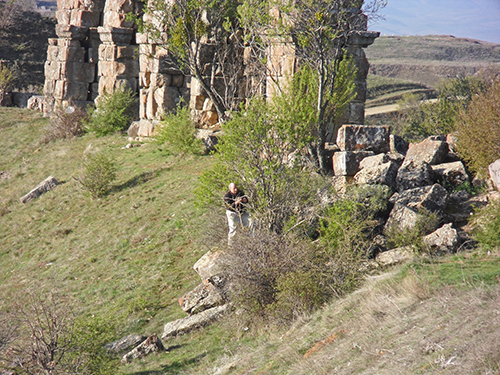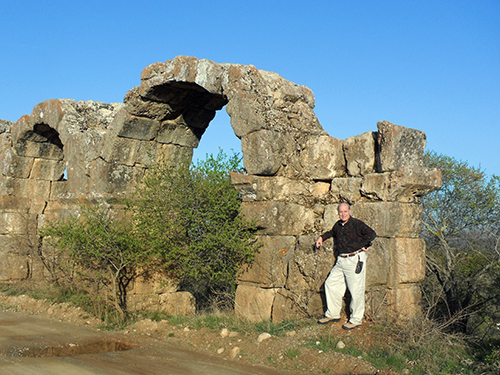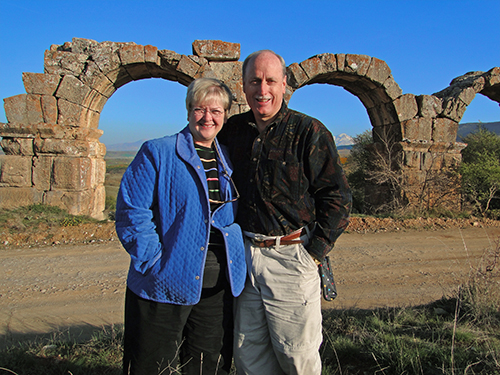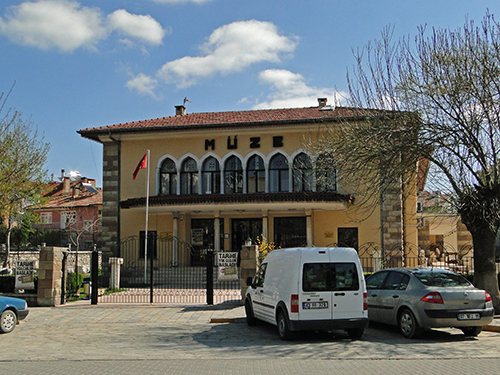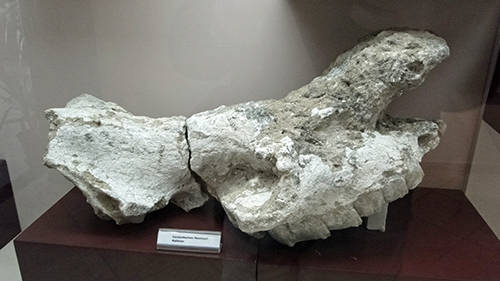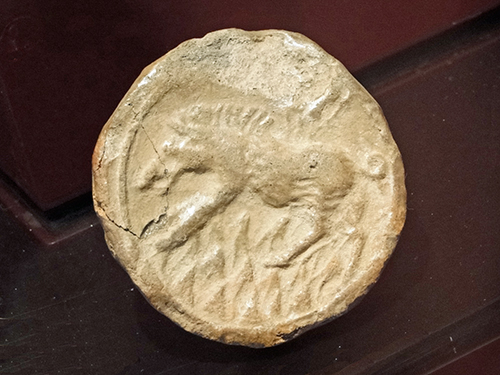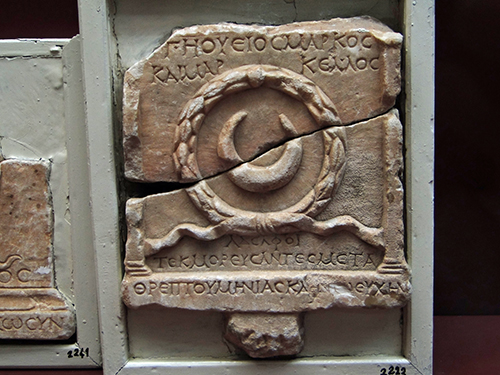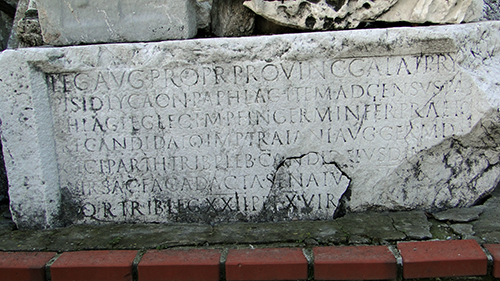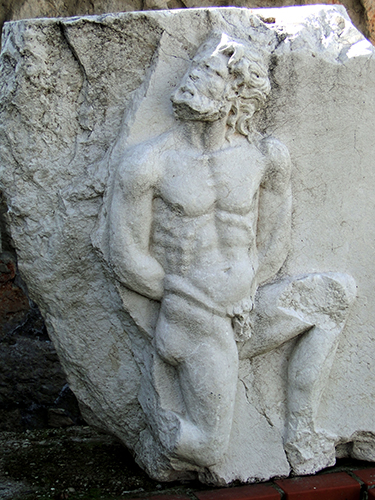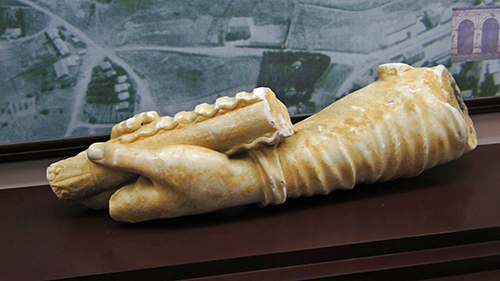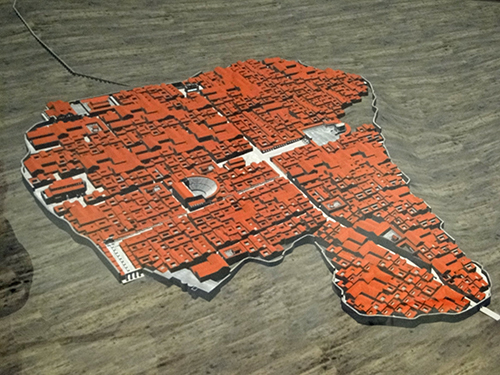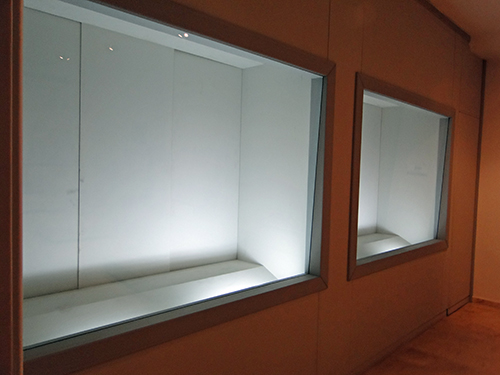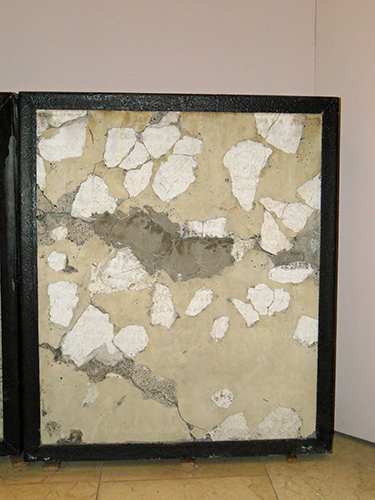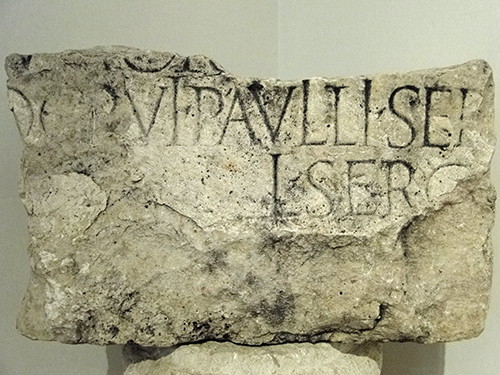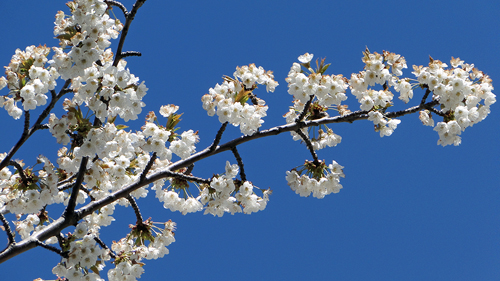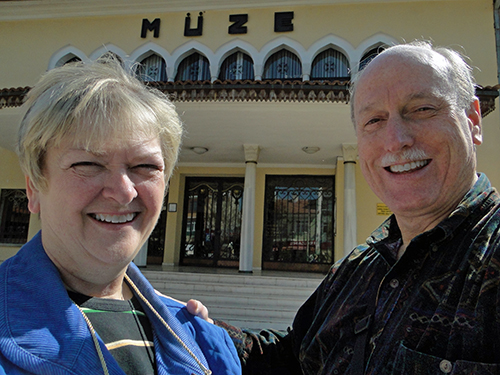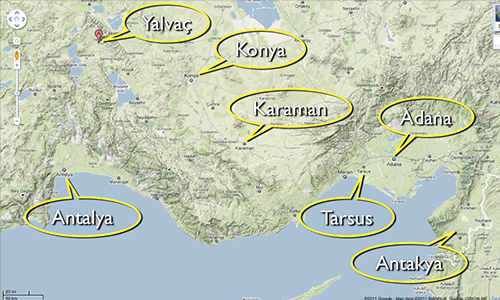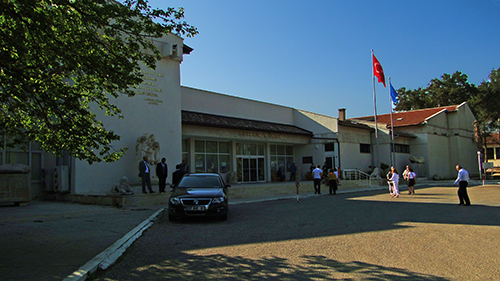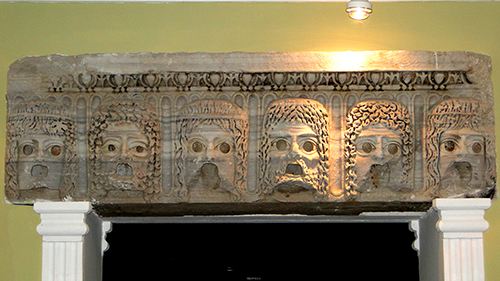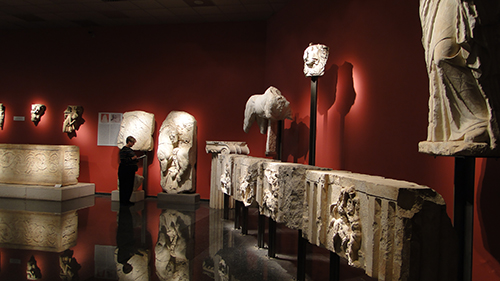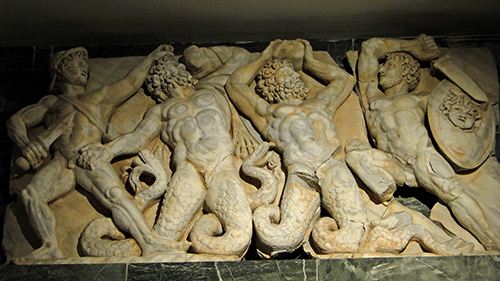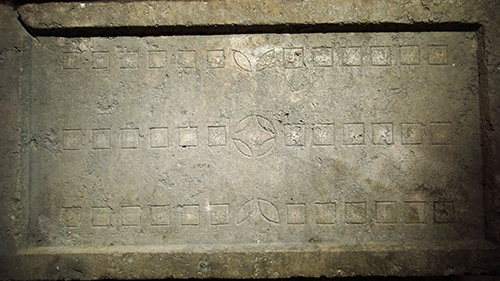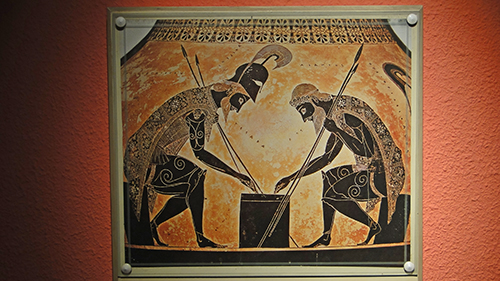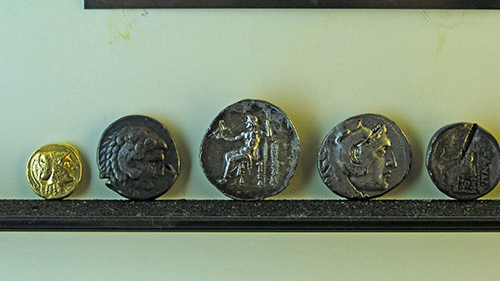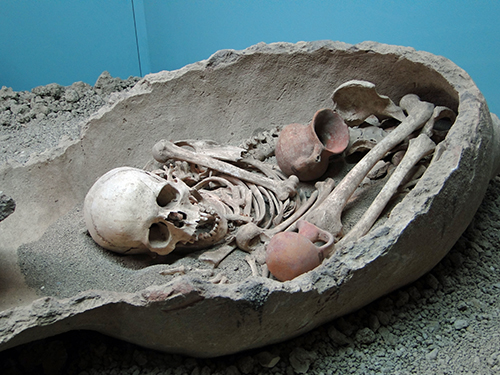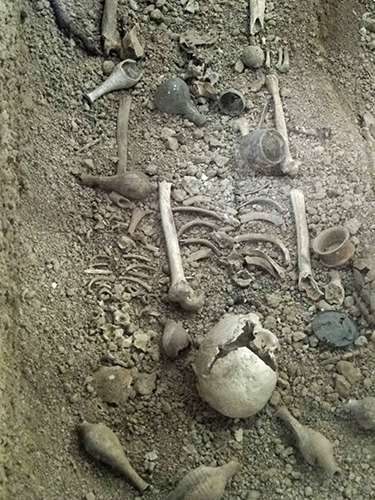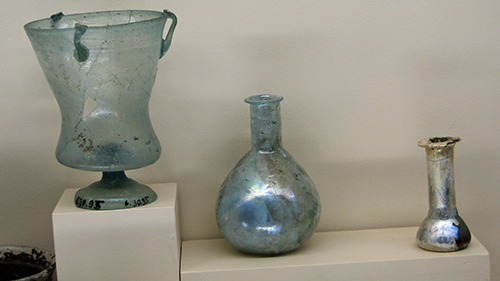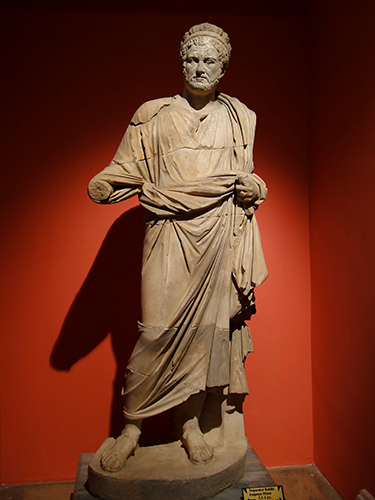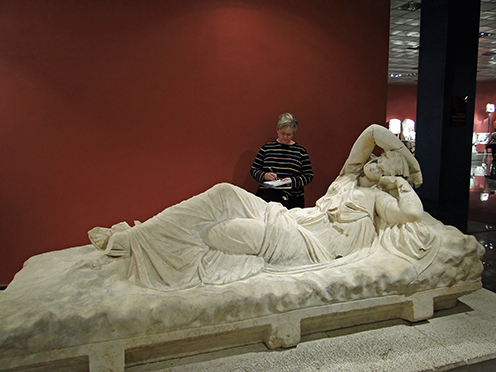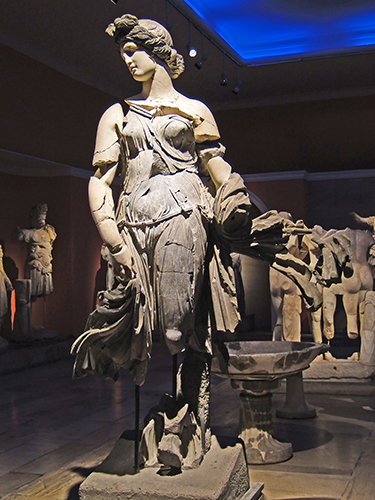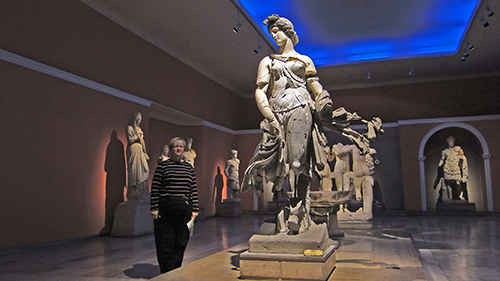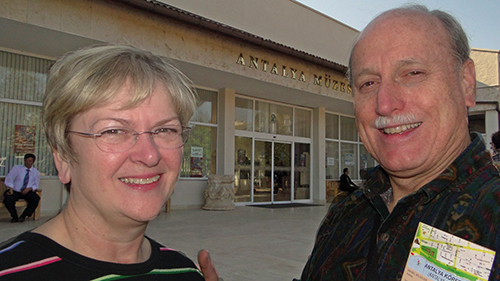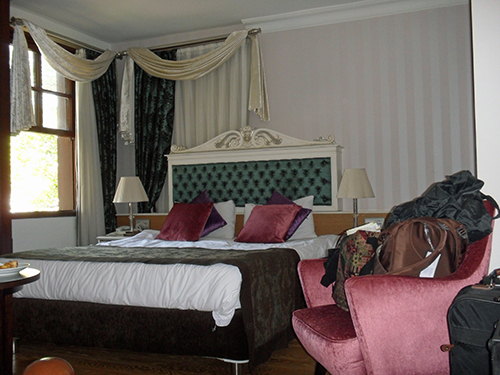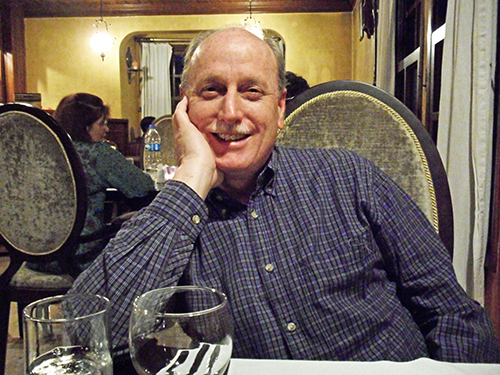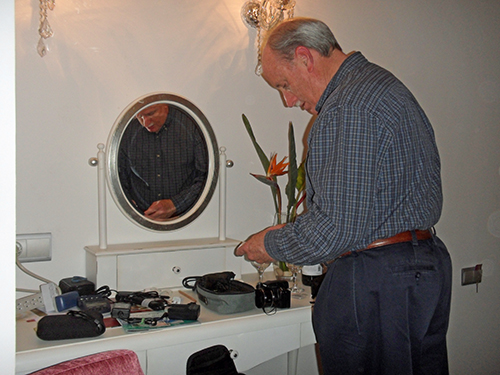Side. Up early and out of here! In the rush packing, Jerry accidently knocks my camera off the low bed, and it hits the stone floor, but not too hard, and seems to be OK. We put Side in our rearview mirror as fast as we can. Off to Denizli, the major city in a valley that is close to the ancient tel of Colossae, which has never been excavated. No matter to my Pauline scholar. He just wants to walk the mound. So, we are off to find Colossae. The Garmin is somewhat helpful in getting us out of Side, and then we can follow highway signs. Side to Denizli is a pretty long ride.
Denizli. Once we get to Denizli, we get gas, use the bathroom, and get the car washed at a BP station. While we’re in line getting the car washed, they bring us hot tea. The Turks are so hospitable. Once done refueling, we’re off to find Colossae, just outside of Denizli, using our Google Earth printout from our research in getting ready for the trip. We know we are close to our destination for the day, Colossae, but we are haunted by the memories of looking for hours and hours the last time we were in this area in 2002 and never finding the site. Of course, back then, highways were under road improvements, and construction had signs down. We also did not have Google Earth satellite photos.
De-ja-vu? We drive out of Denizli on the main highway east. We had calculated how far to our turnoff from the main highway from Google satellite images. We felt like we had gone far enough down the highway, but we had seen no sign again! We start getting an uneasy feeling. Just then, I recognized a building from a Google Earth satellite picture Jerry had collected from his research. Since the Google Earth image was an aerial shot directly overhead, and we were on the ground at a totally different visual perspective, Jerry thought my recognizing the building was pretty incredible. In any case, that split-second decision to tell Jerry we needed to turn back immediately because I thought we had passed the turnoff saved us completely missing our turn and never finding Colossae—again!
Discovery! So we make a U-turn and go back. Voila! There is a small sign to Colossae (2 km) that we missed, and, sure enough, a little way down that road, we make a hard right turn, go down that road a little distance, and then, rising up before us is the tel! The map below offers the GPS coordinates of the site.
If you like, you can put these coordinates into your Google Maps search box in your browser, and you can get even more detailed information about the Colossae tel: 37.78628, 29.2606.
Jerry is very excited. He has waited eight years to get back to Turkey to find the tel of Colossae that we never could find in our first trip, and he was so disappointed and frustrated, because we knew then that we were really close but just could not find the spot. And we almost missed the site again! However, we did discover one bad development right as we were approaching the tel of Colossae.
Camera Trouble. We stop the car to take a distance shot before going up to the tel. I take out my trusty little camera and take a photo, and my camera freezes. We cannot fix it. Jerry does everything he knows to do, including taking out the battery, rebooting, and other actions. Nothing worked. It fell off the bed at that horrible little hotel this morning, and that evidently did her in. So now, I have no camera, except my cell phone. Jerry is really distressed, since he is sure he is responsible. He feels terrible. I have been the main one getting pictures of him while he takes pictures of everything else. Oh well. We just have to press on. Lord knows what Jerry would do if his camera went on the blink! That would be disaster for his research funded by the Lilly Foundation and Ola Farmer Lenaz grants.
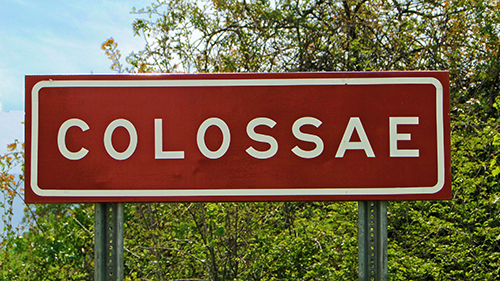
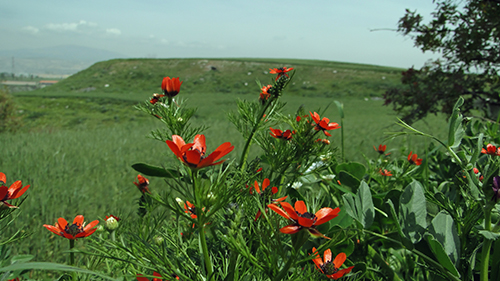
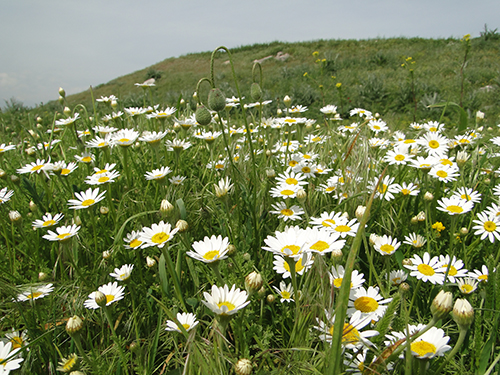
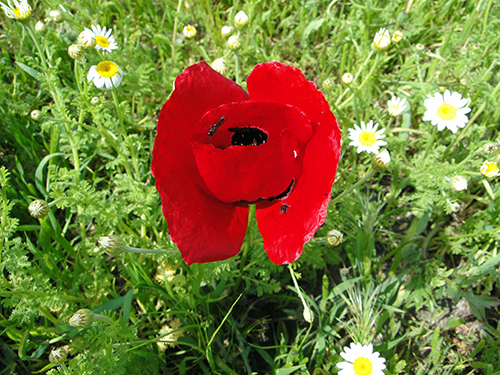
Colossae. We go to the tel, which has a guard/keeper on site, but no charge is required, so we climb on up. Jerry wonders about a cave-like cut into the wall on the way up the side of the tel and discovers remnants of architectural blocks just lying exposed on the surface of the tel. At the top of the tel he points out the mountains nearby that provided the fresh, cool, snowmelt water for the city. We could see the snow at the upper levels. Jerry goes all around the tel while I entertain myself looking at pottery shards and marble pieces that are everywhere. We do a “talking head” movie for Jerry’s classroom lectures and finally take our leave of the site.
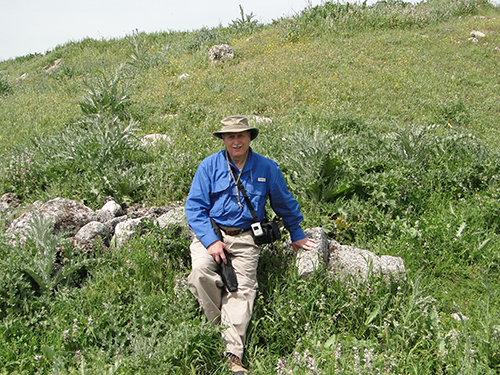
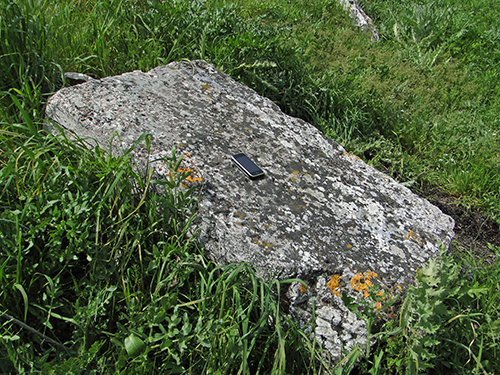
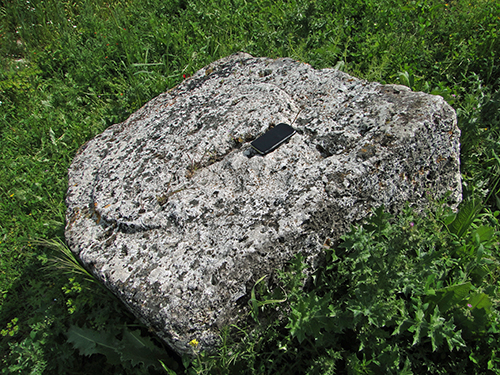
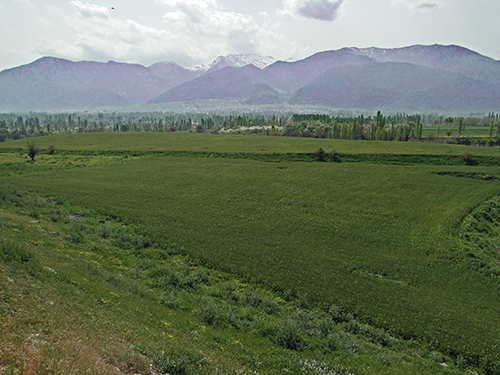

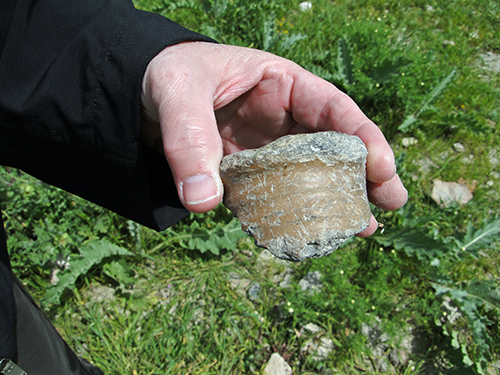
We have now seen the tel of Colossae, which so totally eluded us 8 years ago! Jerry is on top of the world for success this time around. He says he gives all credit to his eagle-eye, “very observant” wife for barely catching in a split second in her peripheral vision the corner of a building she recognized from Google overhead satellite shots where we needed to turn off the main highway just as we passed by. [“You go, girl! Yeah!”—Jerry]
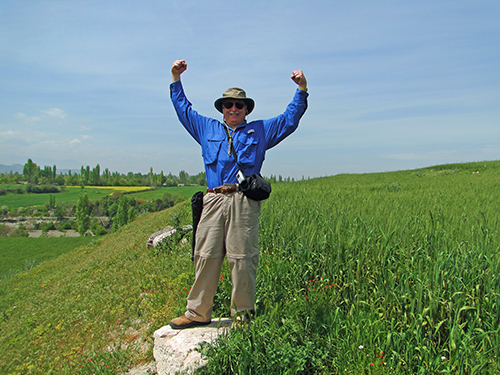
Laodicea. After finishing our site visit of the Colossae tel, we drive back toward the modern city of Denizli. The city of Denizli is much improved over just eight years ago: new roads, new signs, big gas stations, etc. The site of Laodicea is right on the outskirts of Denizli to the north. The signs marking the site are very clear and easy to find, unlike Colossae.
The GPS coordinates of Laodicea are given in the map below. Click the minus sign at the top left of the map to zoom out a little if the gold site maker is not visible.
Current Excavation. Laodicea is being excavated now, which is wonderful. The site has so changed since we were here! About all we could see were surface remains. In fact, so much had changed, we have a hard time at first getting oriented. The main street has been established and a few columns erected, etc. Excavators are working while we’re there. The Syrian Gate, one of the main entrances into ancient Laodicea, has little left of its former glory. The gate was meaningful for Jerry due to its construction under the time of Domitian, the Roman emperor most likely surrounding the historical context of the book of Revelation. The gate led to Syria Street, Laodicea’s main avenue, that was beautified by Domitian. In other words, Domitian clearly was accepted by the leaders and population of Laodicea as their patron to whom they formally owed their political and religious allegiance as his obedient and grateful clients.
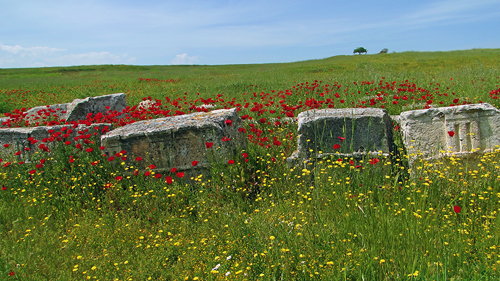
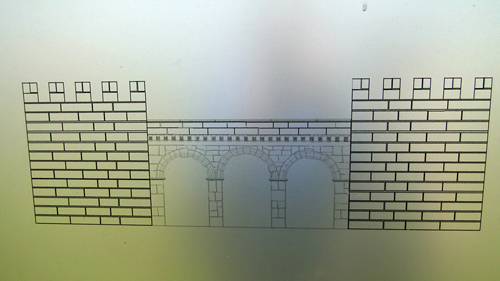




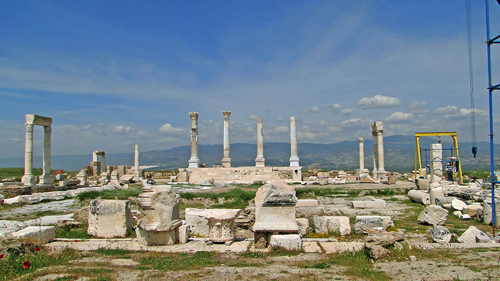
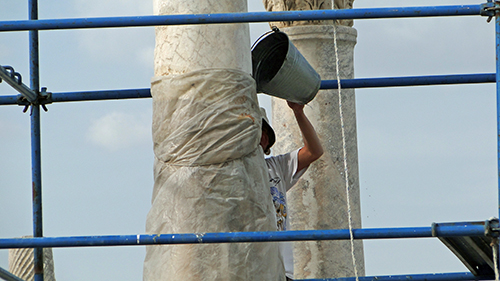
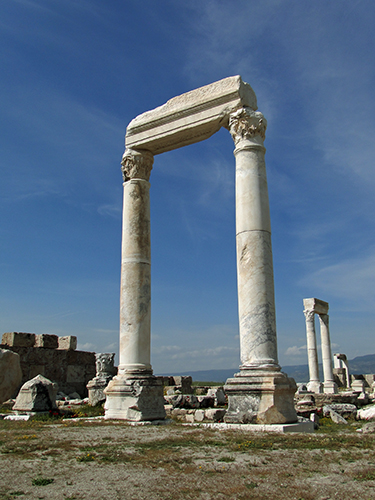
With work going on currently, the site is much more organized, with some areas identified by signs and descriptions. Jerry is pleased to find the bouleterion (“council assembly hall”), but the angle of the ground does not provide a good shot. He wished he had a helicopter (next grant, buddy boy!) This type assembly hall has semicircular, inclined seating on the pattern of theater seating in which the rulers and noblemen of the city discussed, debated, and voted on laws, rules, and regulations for Laodicea.
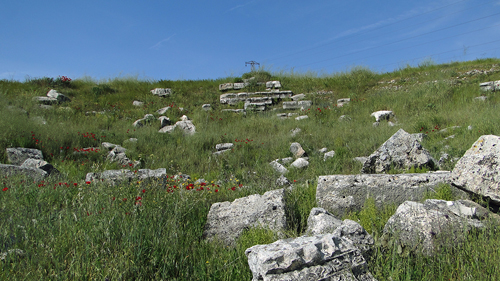
With more signage on the site, Jerry also is pleased to find the location of the various bathhouses that serviced the population of Laodicea. Baths were an important ingredient to a Roman city, the Facebook of Roman social life, and they generally are found almost anywhere Rome went, including Bath, England, which is actually the site of the ancient Roman baths near London. Some of these bath areas on the site of Laodicea are identified, but not yet excavated, such as the east bathhouse complex in the first picture below.
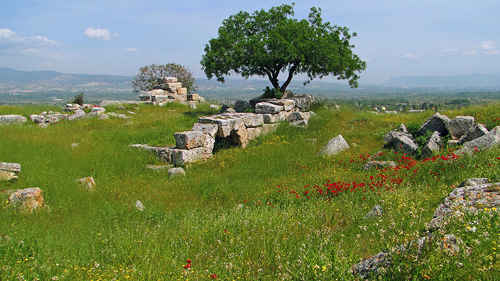
Jerry also found the southern bathhouse complex, which was a little more visible above ground. Jerry was interested in the water system of Laodicea because of a connection to a statement in the Letter of Laodicea in the book of Revelation.
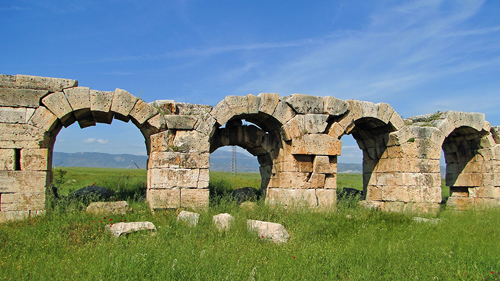
From Laodicea’s western theater the white cliffs of the related ancient city of Hierapolis are easily visible. The white cliffs are limestone deposits from evaporating water of the hot mineral springs flowing over a cliff. Ancient Hierapolis is like our Hot Springs, Arkansas. The warm, mineral water baths were popular for their supposed medicinal effect, and Romans used them for many ailments. (The modern name of the town is Pammukale, which, roughly translated, means, “Snow Palace.” Even today Pammukale is a very popular resort area.)
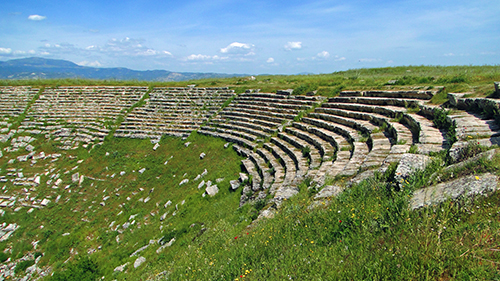
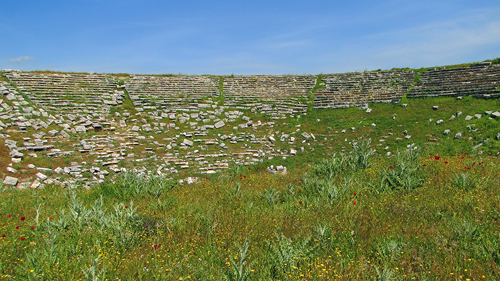
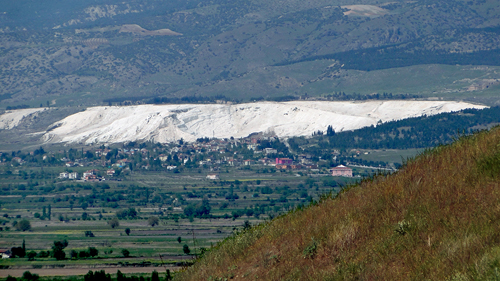

We were visiting Turkey during early spring. The weather can be unpredictable because of weather systems bringing spring rains. However, we counted ourselves so fortunate that most of our touring days, with only two major exceptions toward the beginning and at the end, were bright and sunny. In the bright sunshine we had most of the time, the poppies were dazzling. I do so love the red poppies of Turkey. They grow wild everywhere, sometimes creating entire carpets of red along small valleys off the roadside. Laodicea was full of poppies popping up everywhere. Delightful.
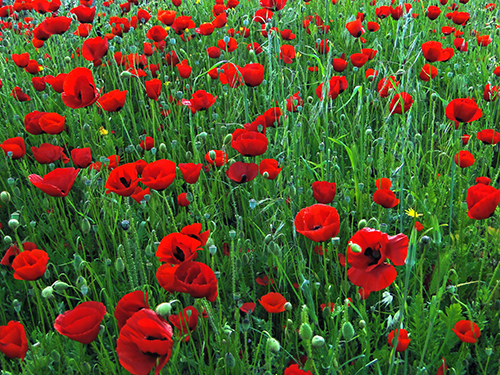

Water Pipes. What archeologists call “Terminal 1” of the water supply system at Laodicea has some exposed Roman terracotta water pipes of a water terminal station for Laodicea near the stadium complex on the far west side of the site. Jerry’s former student and professor at East Texas Baptist University, Richard Johnson, had gotten a picture of the pipes, and Jerry wanted a picture too. The pipes would help illustrate well a verse in one of Revelation’s Seven Letters. So Jerry hiked off to find the pipes.I waited a long time in some shade I found not far from the Syrian Gate entrance and worked on our photo database. Jerry finally comes back around, hot and exhausted, but he did not find the pipes. Bummer! He’s disappointed not to get his picture, but the afternoon, though pretty hot in the direct sun, was gorgeous, and Jerry had seen so much more than the first time we visited the site in 2002. He was so glad to see the excavation work going on. Jerry did see this terracotta waterline archeologists had discovered. These are the waterlines that the water terminal he tried to find would supply.
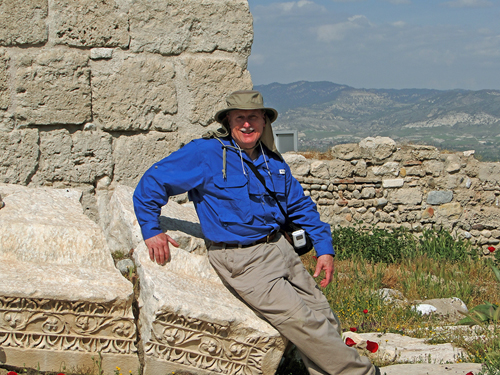
Although the focus of this research trip is not on the wildlife of Turkey, Jerry was catching shots all the time of animals and critters of all kinds. He especially liked this one. He dubbed him, “Mr. Laodicean Lizard.”
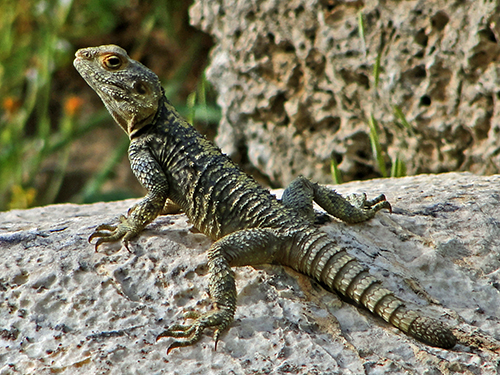
Colossae Thermal Hotel. Leaving the site of Laodicea, we stop at a roadside market and get Jerry a big liter of water, since his hot hike for the water pipes had dehydrated him severely, even though he was drinking water along the way. We then go on down the road a few miles to the Colossea Thermal Hotel and check in. The Colossae Thermal is a great hotel where we stayed in 2002. We have a great room—a suite for the price of a double! Today is going to be a good day! We ate dinner buffet with tour groups that were there, and the food was delicious. After dinner we perused a shop and looked at some scarves. We find out that free wifi is available in the lobby.
Back in our room, Jerry called his friend Richard long distance using our Skype account to get the exact location of the pipes at Laodicea. Jerry asks him to email a map to us at my A&R email account that we can retrieve downstairs using the hotel lobby’s free wifi. Later we get an email from Richard with a Google map showing the exact location. Jerry is incredulous. He recognizes from Richard’s Google map that he actually was very close to the spot this afternoon but somehow just didn’t find the pipes. He is quite determined to go back tomorrow afternoon after we have finished touring the ancient site of Hierapolis to try again at nearby Laodicea strictly for the water pipes, if we have time. Jerry’s poor feet are so sore, so I massaged them with lotion for him. Happy feet are important on a trip like this.
Rental Redux. I decided to try again to follow up on reporting the car damage. I called Avis in Adana where we had rented the car and asked to speak to Neozi (pronounced ‘knee ozzie’), the guy who had helped us when we rented the car. Neozi wasn’t in, but I talked to another person who spoke decent English (yea). I told him the damage to the car was a definite scratch on the back door, but not like seriously dented in. He said everything was OK, that we could continue using the car, and we could just wait until the Istanbul airport where we were returning the car to deal with the damage. I pray God help us deal with the situation easily when we get to the airport in Istanbul. Off to bed, and slept pretty good, but I still woke up thinking about the car.
For a video of the Colossae and Laodicea action today:
